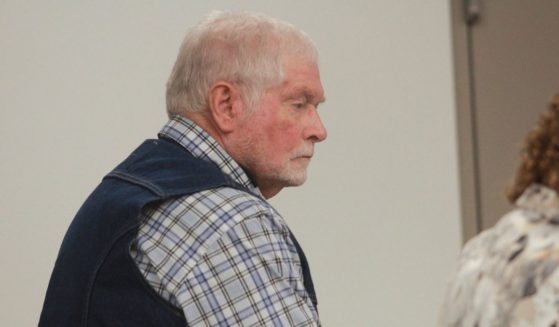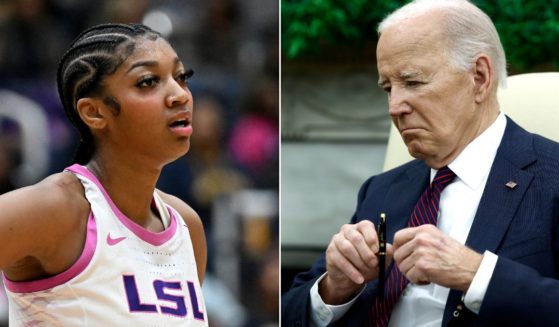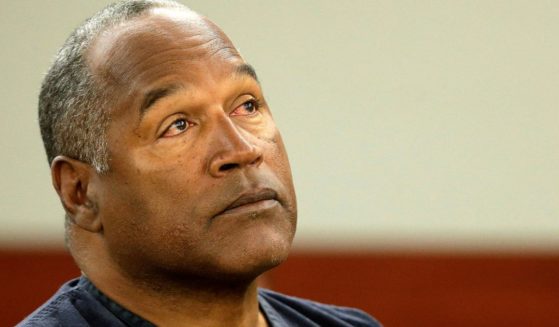Nat. Geographic Admits They Were Wrong About Famous Climate Change Polar Bear Pic
They say the retraction never gets as much attention as the original mistake did. That’s doubly true when the picture in question went viral and the correction came months later.
You perhaps remember the photo of an emaciated polar bear that appeared in National Geographic last December. It was captured by photographers Cristina Mittermeier and Paul Nicklen on the Baffin Islands in Canada.
This is what you probably saw last winter:
Heart-breaking scene of emaciated polar bear searching for food in Arctic Canada https://t.co/lTuERCn6zJ @NatGeo pic.twitter.com/Fjy632IVw2
— Prof Jamie Woodward (@Jamie_Woodward_) December 8, 2017
The original article describes, in horrifying fashion, “the polar bear clinging to life, its white hair limply covering its thin, bony frame. One of the bear’s back legs drags behind it as it walks, likely due to muscle atrophy. Looking for food, the polar bear slowly rummages through a nearby trashcan used seasonally by Inuit fishers. It finds nothing and resignedly collapses back down onto the ground.”
“We stood there crying — filming with tears rolling down our cheeks,” Nicklen said.
However, in an article for the August 2018 issue of National Geographic titled “Starving-Polar-Bear Photographer Recalls What Went Wrong,” Mittermeier says that the narrative that grew up around the photograph — in particular its relation to climate change — was inaccurate.
“Photographer Paul Nicklen and I are on a mission to capture images that communicate the urgency of climate change. Documenting its effects on wildlife hasn’t been easy. With this image, we thought we had found a way to help people imagine what the future of climate change might look like. We were, perhaps, naive. The picture went viral — and people took it literally,” Mittermeier wrote.
“Paul spotted the polar bear a year ago on a scouting trip to an isolated cove on Somerset Island in the Canadian Arctic. He immediately asked me to assemble our SeaLegacy SeaSwat team. SeaLegacy, the organization we founded in 2014, uses photography to spread the message of ocean conservation; the SeaSwat team is a deployable unit of storytellers who cover urgent issues. The day after his call our team flew to an Inuit village on Resolute Bay. There was no certainty that we would find the bear again or that it would still be alive.”
The implication here, of course, is that this wasn’t a dispassionate attempt to convey the effects of climate change but a deliberate attempt to dramatize things. Also, we don’t know why the polar bear was wasting away — it could have been some form of disease. However, Mittermeier argues that she and Nicklen didn’t mean for it to take off the way it did.
“When Paul posted the video on Instagram, he wrote, ‘This is what starvation looks like.’ He pointed out that scientists suspect polar bears will be driven to extinction in the next century,” Mittermeier wrote.
“He wondered whether the global population of 25,000 polar bears would die the way this bear was dying. He urged people to do everything they could to reduce their carbon footprint and prevent this from happening. But he did not say that this particular bear was killed by climate change.” (Emphasis mine.)
Mittermeier said their “mission was a success, but there was a problem: We had lost control of the narrative. The first line of the National Geographic video said, ‘This is what climate change looks like’ — with ‘climate change’ highlighted in the brand’s distinctive yellow. In retrospect, National Geographic went too far with the caption. Other news outlets ran dramatic headlines like this one from the Washington Post: ‘‘We stood there crying’: Emaciated polar bear seen in ‘gut-wrenching’ video and photos.’”
“Perhaps we made a mistake in not telling the full story — that we were looking for a picture that foretold the future and that we didn’t know what had happened to this particular polar bear.”
It is a relatively frank admission by the photographer and the magazine, especially given the leanings of both. Still, this isn’t something that should have happened in the first place. In a rush to tie this to climate change, National Geographic was willing to usher its readers past the actual facts of the picture and instead paint it as a pure result of climate change. And then there’s the fact that this comes eight months later.
Let this serve as an example for other publications: In a rush to fill a leftist narrative, don’t ignore reality. If they do, readers are going to be there to hold them accountable.
Truth and Accuracy
We are committed to truth and accuracy in all of our journalism. Read our editorial standards.












